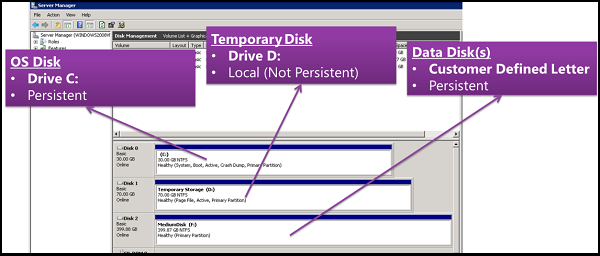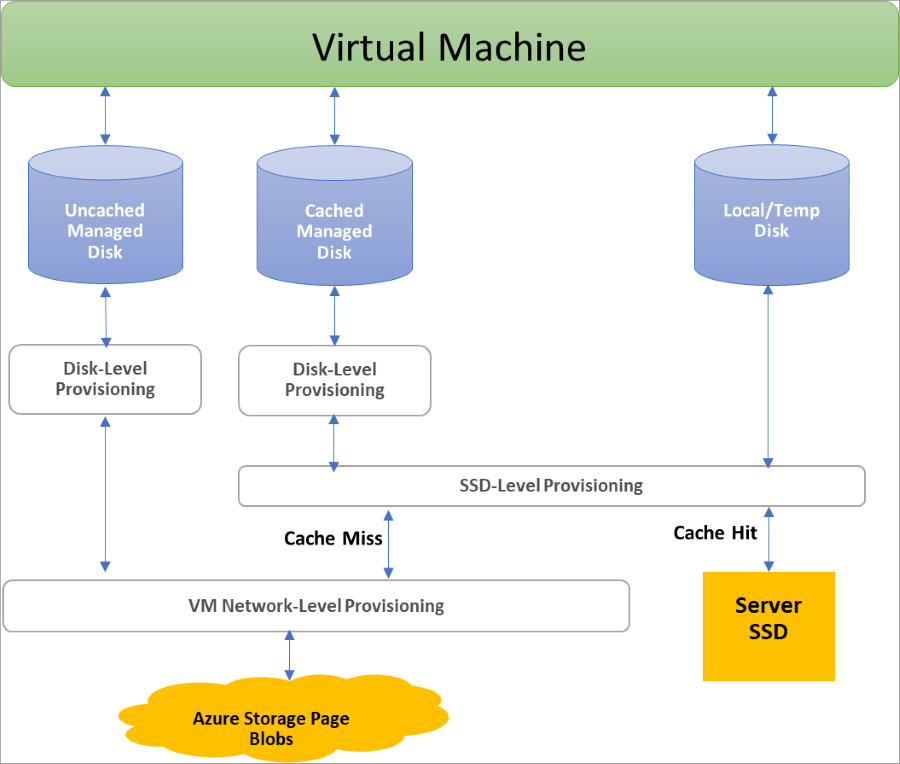Learn about Azure managed disks
This tutorial will help you to Learn about Azure managed disks. Azure managed discs are Azure-managed block-level storage volumes that are utilized with Azure Virtual Machines. Managed discs are virtualized versions of real discs on on-premises servers. All you have to do with managed discs is define the disc size, disc type, and provide the disc. Azure will take care of the rest once you’ve provisioned the disc.
Know the Benefits of managed disks
Let’s look at some of the benefits you gain by using managed disks –
- Firstly, Highly durable and available
- Also, Simple and scalable VM deployment
- Furthermore, Integration with availability sets
- Subsequently, Integration with Availability Zones
- Also, Azure Backup support
- Furthermore, Granular access control
- Lastly, Upload your vhd
Know about Security
Private Links
- Managed disks support using Private Links to import or export a managed disk internal to your network.
- For detached managed discs and snapshots, Private Links lets you establish a time-bound Shared Access Signature (SAS) URI that you can use to export the data to other regions for regional expansion, disaster recovery, and forensic investigation.
Encryption
- Two types of encryption are available on managed drives. The storage service does the first, which is Server Side Encryption (SSE).
- The second is Azure Disk Encryption (ADE), which you may turn on for your VMs’ OS and data drives.
- Server-side encryption provides encryption-at-rest and safeguards your data to meet your organizational security and compliance commitments.Azure Disk Encryption allows you to encrypt the OS and Data disks used by an IaaS Virtual Machine.
Know about Disk roles
The data disc, the OS disc, and the temporary disc are the three major disc responsibilities in Azure. These responsibilities correspond to the discs connected to your virtual system.

Data disk
- A data disc is a managed disc that’s attached to a virtual machine and used to store application data and other important information.
OS disk
- Every virtual machine has one operating system disc linked to it. That OS has a pre-installed operating system that was chosen when the VM was constructed. The boot volume is located on this disc. However, this one has a maximum capacity of 2,048 GiB.
Temporary disk
- Every VM contains a temporary disk, which is not a managed one. The temporary drive is meant to solely hold data such as page or swap files and offers short-term storage for programmes and processes.
Know about Managed disk snapshots
- A managed disc snapshot is a read-only, crash-consistent entire copy of a managed disc that is saved by default as a normal managed disc. You can back up your managed drives at any moment with snapshots. These Snapshots are separate from the original disc and may be utilised to make new managed discs.
Images
- A managed custom image can also be created on a managed drive. Further, you can make an image from a generic (sysprepped) VM or from a bespoke VHD in a storage account. This method creates a single picture.
Learn about Disk allocation and performance
The following diagram depicts real-time allocation of bandwidth and IOPS for disks, using a three-level provisioning system:

- The per-disk IOPS and bandwidth assignment are specified at the initial level of provisioning. Furthermore, the compute server host provides SSD provisioning at the second level, but only for data saved on the server’s SSD, which includes cached discs (ReadWrite and ReadOnly), as well as local and temp drives.
- Finally, for any I/O that the compute host delivers to Azure Storage’s backend, VM network provisioning occurs at the third level.
Reference documentation – Introduction to Azure managed disks

